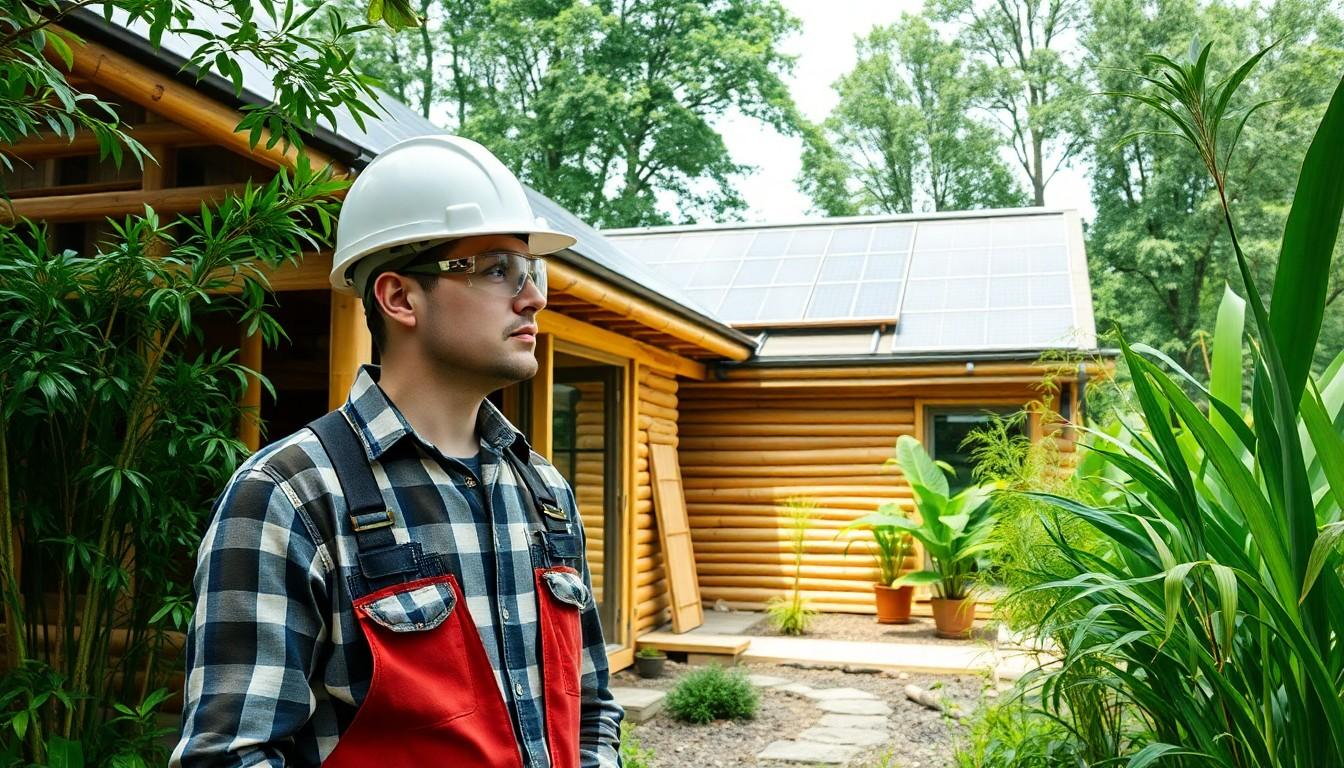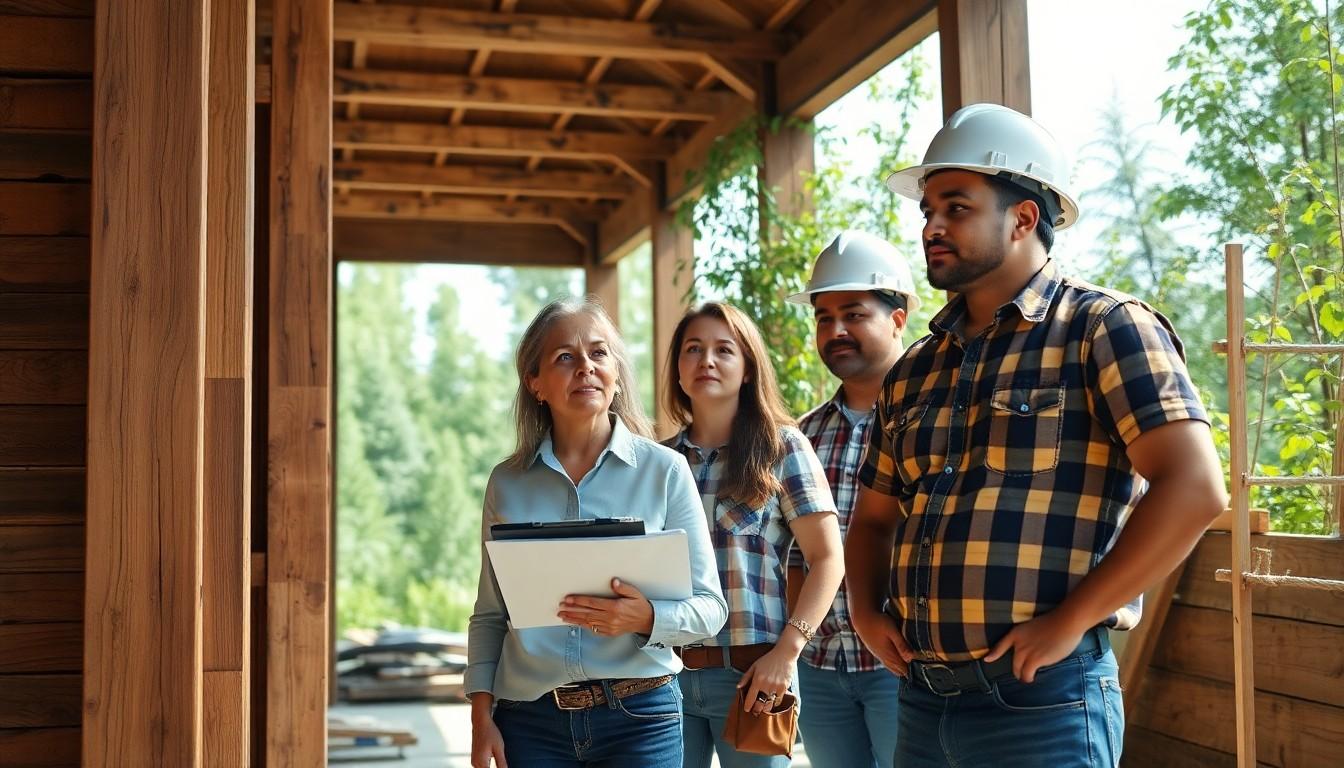In a world where the planet’s health hangs in the balance, sustainable living builders are the unsung heroes crafting eco-friendly havens. These innovative professionals don’t just construct houses; they create lifestyles that nurture the Earth while keeping the comfort of home intact. Imagine living in a space that not only looks good but also gives Mother Nature a high-five every day.
With a dash of creativity and a sprinkle of eco-consciousness, sustainable builders are redefining what it means to build smart. They’re like the superheroes of the construction world, wielding tools that promote energy efficiency and sustainable materials. So, whether you’re dreaming of a cozy cabin or a sleek modern abode, these builders are ready to turn your green dreams into a reality. Let’s dive into the world of sustainable living builders and discover how they’re shaping a brighter, greener future.
Sustainable Living Builders
Sustainable living builders play a crucial role in the modern construction landscape. These professionals focus on creating spaces that are both environmentally friendly and comfortable for occupants.
Definition of Sustainable Living Builders
Sustainable living builders design homes that emphasize eco-friendliness. Their projects often incorporate energy-efficient systems, renewable materials, and sustainable practices. By prioritizing low-impact construction methods, they minimize harm to the environment. They also assess the long-term impacts of building materials and techniques on health. This approach leads to homes that support efficient energy use and reduce overall carbon footprints.
Importance of Sustainable Living
Sustainable living holds significant importance in today’s world. Reducing environmental impact contributes to healthier ecosystems. Living sustainably promotes energy conservation and lowers utility costs over time. Employing sustainable practices strengthens community well-being by improving air and water quality. Additionally, sustainable living fosters a culture of responsibility toward future generations. Creating homes focused on sustainability allows individuals and families to align their living spaces with their values.
Key Practices of Sustainable Living Builders

Sustainable living builders integrate eco-conscious practices in their construction methods. They prioritize methods that minimize environmental impact and enhance occupant comfort.
Use of Eco-Friendly Materials
Sustainable living builders select renewable resources like bamboo, reclaimed wood, or recycled steel for construction projects. These materials reduce reliance on finite sources and lower emissions. Non-toxic finishes and paints contribute to better indoor air quality, supporting occupants’ health. Insulation options include recycled or natural fibers, which improve energy efficiency. Builders often collaborate with local suppliers, fostering community engagement and reducing transportation-related emissions. Each chosen material reflects a commitment to sustainability while promoting a healthier home environment.
Energy Efficiency Solutions
Energy-efficient solutions play a crucial role in sustainable construction. Builders design homes with proper orientation to maximize natural light and reduce heating needs. High-performance windows minimize heat loss and gain, ensuring year-round comfort. Incorporating renewable energy systems like solar panels allows homeowners to generate clean energy. Programmable thermostats and Energy Star appliances further enhance energy management within homes. Builders often emphasize efficient insulation methods, which significantly lower energy consumption and lead to reduced utility bills over time. To further optimize energy use, many sustainable home designs now include advanced systems like radiant heating floor panels, which deliver consistent warmth and reduce reliance on traditional heating methods. Such solutions align with the goal of creating a sustainable and cost-effective living space.
Benefits of Hiring Sustainable Living Builders
Hiring sustainable living builders offers significant advantages that contribute to a more eco-conscious lifestyle. These professionals integrate innovative solutions, making living spaces healthier and more efficient.
Environmental Impact
Creating structures with minimal ecological footprints generates positive environmental changes. Sustainable living builders utilize eco-friendly materials like bamboo, reclaimed wood, and recycled steel. Such choices reduce dependency on limited resources and lower emissions. Techniques like low-impact construction further minimize habitat disruption, protecting local ecosystems. By focusing on renewable energy systems, these builders reduce overall carbon footprints, promoting cleaner air and healthier environments for occupants.
Cost Savings Over Time
Investing in sustainable construction leads to financial benefits that accrue over time. Energy-efficient designs minimize utility costs, as homes optimized for natural light and equipped with high-performance windows use less energy. Incorporating Energy Star appliances and renewable energy systems like solar panels further enhances savings. Homeowners often notice reduced maintenance costs due to the durability of eco-friendly materials. In the long run, these cost savings contribute to a more sustainable lifestyle, aligning financial incentives with environmental consciousness.
Challenges Faced by Sustainable Living Builders
Sustainable living builders encounter various obstacles that can hinder their efforts to create eco-friendly spaces. These challenges demand innovative solutions and strategies to promote sustainability effectively.
Regulatory Hurdles
Regulatory hurdles pose significant challenges for sustainable living builders. Zoning laws often limit the types of materials and techniques that can be used. Permitting processes can also prolong project timelines, resulting in increased costs. Compliance with building codes frequently involves navigating complicated regulations that may not support sustainable practices. Additionally, inconsistent policies across regions can create confusion, making it difficult for builders to implement best practices. Navigating these complex regulations requires builders to stay informed and adapt to changing requirements.
Market Perception
Market perception remains a critical challenge for builders focused on sustainability. Some potential clients may view eco-friendly construction as more expensive than traditional methods. Misconceptions about the durability and performance of sustainable materials can create reluctance among homebuyers. Furthermore, understanding the long-term benefits of energy-efficient designs often requires educating clients on cost savings and environmental impacts. Builders invest time and resources to change these perceptions, striving to demonstrate the value of sustainable living. Increasing consumer awareness of environmental issues presents builders with opportunities to shift the narrative and promote informed choices.
Sustainable living builders are reshaping the construction landscape by prioritizing eco-friendly practices that benefit both the environment and communities. Their commitment to using renewable materials and energy-efficient designs not only enhances the quality of life for occupants but also contributes to a healthier planet.
By overcoming challenges and educating clients about the long-term advantages of sustainable construction, these builders play a crucial role in fostering a culture of responsibility. Investing in sustainable living is more than just a trend; it’s a vital step toward ensuring a better future for generations to come. Embracing their innovative approaches can lead to a more sustainable and resilient world.





